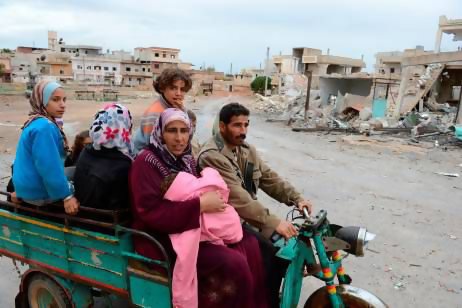The email sent will contain a link to this article, the article title, and an article excerpt (if available). For security reasons, your IP address will also be included in the sent email.

Syrian family leave Taftanaz after shelling by regime forces (Photo: Philippe Desmazes/AFP)
As I walked away, I saw a tall, elderly man with a red-and-white scarf on his head speaking with men from the neighbourhood. He gestured with his hands and repeated over and over: "This is my home, did you see it? This is my home." They tried calming him, telling him to be grateful that none of his loved ones had been killed in the strike. He responded, crying: "This is my home." Our eyes met and I was ashamed that I had embarrassed him by meeting his tearful gaze. I looked down and walked away.
Sitting alone in the car for the first time that day, my own tears escalated into uncontrollable sobs. I thought I would have felt these emotions when I crossed the border, when I saw the graffiti, when I saw the destruction, but the old man was the missing connection. These primal expressions of despair are absent from the images and even the videos. You can't imagine them from a distance. You have to be close enough to see the tears.

 Return to Article
Return to Article